
Proposal for a new cafeteria for the Cathedral of St. Peter and Paul in Brno
Design of a new altar based on the principles of the cathedral church. The basic layout of the entire presbytery is left as per the client's request.
The altar is a solid, material point in space. I analyzed the geometry of the main tabernacle altar (A. Prokop and K. Woresch) and determined its basic module of 32 cm and the geometric framework on which it is constructed. It conceptually connects to the pseudo-Gothic altar in terms of proportionality and division, and it is also linked to it in its color scheme. Its shape can even echo vaulted ceilings or cubism. The cubic altar is symbolically built on 12 triangular pillars, signifying completeness. (Jesus has twelve apostles, twelve baskets remained after the feeding (M 6:43), the heavenly Jerusalem has twelve gates (Rev 21:12). Augustine says: The number twelve is the holiest). The compact shape of the altar, firmly connected to the earth along with the Gothic-like verticality of the ribs, symbolizes the duality of the Son's humanity and divinity completed in His sacrifice. The front features three niches. Its proportions are 1:2:1 (96:192:96 cm), and its basic division uses the existing altar's module of 32 cm in all directions with the sides then divided in whole-number ratios of one third, one quarter, and one sixth. The altar is cast in bronze, and the top slab is made of Carrara marble.
The altar is a solid, material point in space. I analyzed the geometry of the main tabernacle altar (A. Prokop and K. Woresch) and determined its basic module of 32 cm and the geometric framework on which it is constructed. It conceptually connects to the pseudo-Gothic altar in terms of proportionality and division, and it is also linked to it in its color scheme. Its shape can even echo vaulted ceilings or cubism. The cubic altar is symbolically built on 12 triangular pillars, signifying completeness. (Jesus has twelve apostles, twelve baskets remained after the feeding (M 6:43), the heavenly Jerusalem has twelve gates (Rev 21:12). Augustine says: The number twelve is the holiest). The compact shape of the altar, firmly connected to the earth along with the Gothic-like verticality of the ribs, symbolizes the duality of the Son's humanity and divinity completed in His sacrifice. The front features three niches. Its proportions are 1:2:1 (96:192:96 cm), and its basic division uses the existing altar's module of 32 cm in all directions with the sides then divided in whole-number ratios of one third, one quarter, and one sixth. The altar is cast in bronze, and the top slab is made of Carrara marble.
The English translation is powered by AI tool. Switch to Czech to view the original text source.
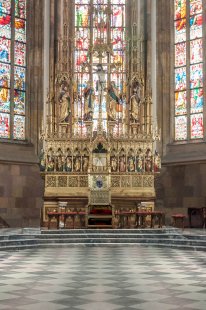
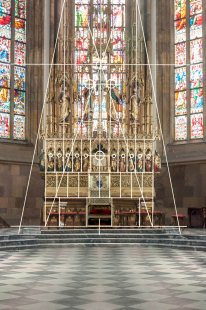
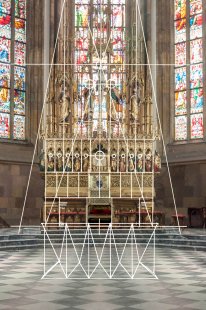
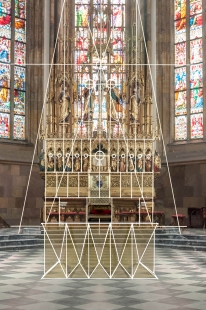
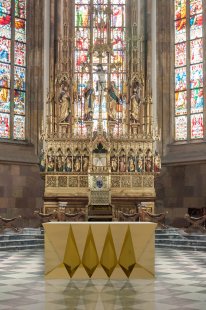

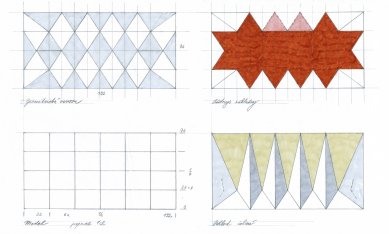
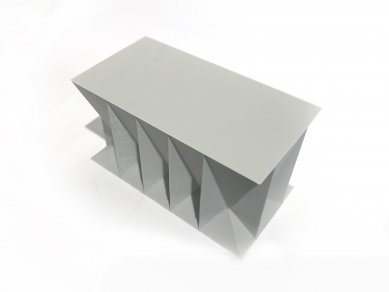
1 comment
add comment
Subject
Author
Date
Nová menza
Rivass
18.06.19 07:27
show all comments










